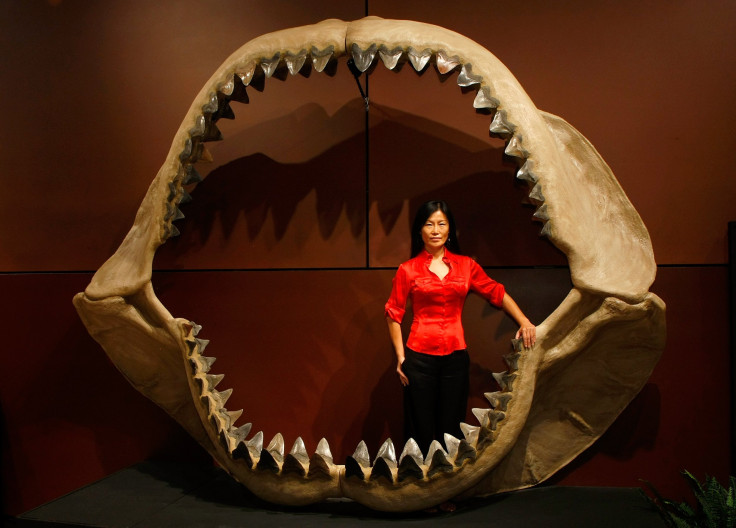Ancient Megalodon Shark Was A Superpredator Weighing 70 Tons - And All Jaws
KEY POINTS
- The megalodon lived roughly 23 to 3.6 million years ago
- It measured 50 feet from end to end, and was bigger than a school bus
- The researchers predicted the megalodon was a great swimmer as well
People's fascination with megalodon, the mighty shark of yore, refuses to die down. It was the largest predator of its time and, for that matter, the largest shark to have lived on earth. Now, new 3D modeling sheds light on its anatomy, and reveals incredible details about the giant.
According to a study published in the journal Science Advances, Otodus megalodon was a sea creature that weighed up to 70 tonnes, which was equivalent to 10 elephants. It measured 50 feet (16 meters) from end to end, and was bigger than a school bus.
The name megalodon is derived from Greek words, which mean "giant tooth." Perhaps the defining feature of megalodon was its huge teeth -- each measuring the size of a "human fist," and they packed a powerful bite. New research suggests the gargantuan sea monster could finish a dish of the killer shark in five bites.
New 3-D modeling of a shark, aptly called megalodon, reveals that the massive superpredator may have been larger, faster and more wide-ranging animals than previously thought. https://t.co/RU943Lktqt
— The New York Times (@nytimes) August 17, 2022
It is believed that with a gaping mouth opening up to six feet, the megalodon could devour many large predators, including other types of sharks. Once it had had its fill, the megalodon could traverse the ocean waters for months at a time, the researchers suggest.
"It would be a superpredator just dominating its ecosystem," said co-author John Hutchinson, Royal Veterinary College, England. "There is nothing really matching it."
Based on their calculations, the researchers predicted the megalodon was a great swimmer too. It could have traveled across multiple oceans with ease.
These ancient cousins of sharks lived roughly 23 to 3.6 million years ago, and were found in almost every corner of the ocean.
While juveniles stayed near the shores, adults favored coastal areas, but could swim into the open ocean. The most northern fossils were found near the coast of Denmark and the most southern in New Zealand, according to Ocean.si.edu.
A clear picture of megalodon had eluded scientists till now on account of its cartilaginous body. Cartilage is lighter than bone and does provide better buoyancy in fish. In the human body, cartilage is found in the nose and ears.
However, the fossilization of cartilage is not an efficient process, and hence researchers missed out on key details about the organism.
The only preserved parts of megalodon include a rare collection of vertebrae at the Belgium museum since the 1860s, and a good amount of megalodon teeth and fossilized excrement.
Since we have very few fossils of the species, these 3D digital creations require a "leap of imagination," said Michael Gottfried, a paleontologist at Michigan State University who was not involved in the study.
But he did admit the conclusions of this study are in line with what is known about megalodon.

© Copyright IBTimes 2025. All rights reserved.





















